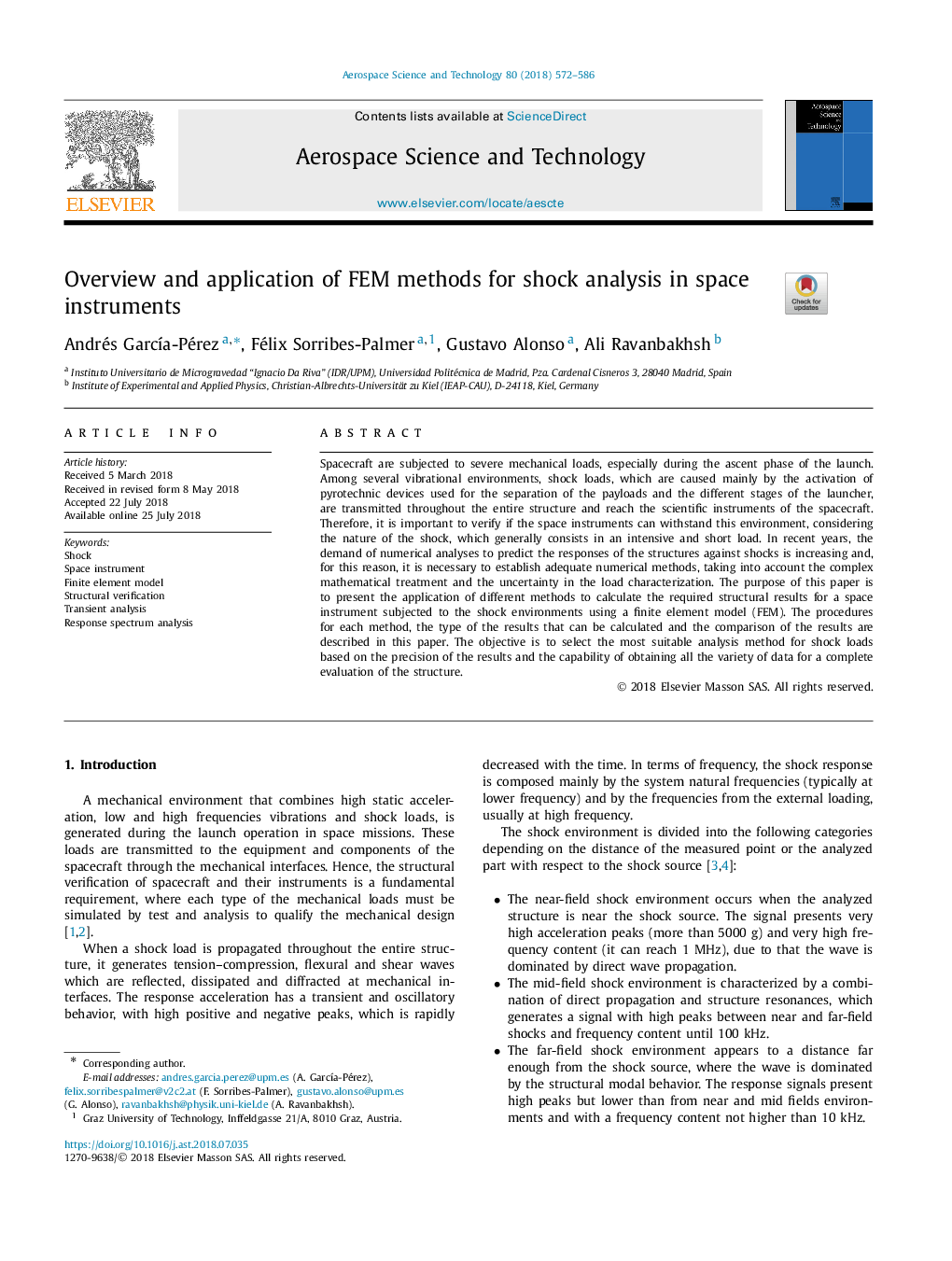| Article ID | Journal | Published Year | Pages | File Type |
|---|---|---|---|---|
| 8057318 | Aerospace Science and Technology | 2018 | 15 Pages |
Abstract
Spacecraft are subjected to severe mechanical loads, especially during the ascent phase of the launch. Among several vibrational environments, shock loads, which are caused mainly by the activation of pyrotechnic devices used for the separation of the payloads and the different stages of the launcher, are transmitted throughout the entire structure and reach the scientific instruments of the spacecraft. Therefore, it is important to verify if the space instruments can withstand this environment, considering the nature of the shock, which generally consists in an intensive and short load. In recent years, the demand of numerical analyses to predict the responses of the structures against shocks is increasing and, for this reason, it is necessary to establish adequate numerical methods, taking into account the complex mathematical treatment and the uncertainty in the load characterization. The purpose of this paper is to present the application of different methods to calculate the required structural results for a space instrument subjected to the shock environments using a finite element model (FEM). The procedures for each method, the type of the results that can be calculated and the comparison of the results are described in this paper. The objective is to select the most suitable analysis method for shock loads based on the precision of the results and the capability of obtaining all the variety of data for a complete evaluation of the structure.
Related Topics
Physical Sciences and Engineering
Engineering
Aerospace Engineering
Authors
Andrés GarcÃa-Pérez, Félix Sorribes-Palmer, Gustavo Alonso, Ali Ravanbakhsh,
